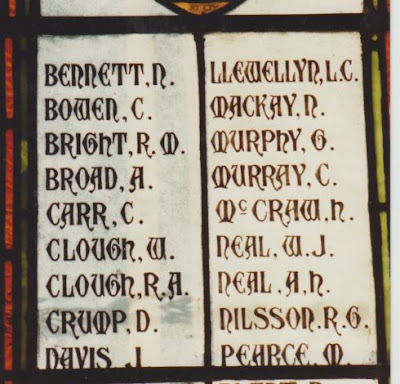William
Tardif was the eldest of six children born to William Reilly Tardif and
Clementina Ross between 1893 and 1905. He was born in Wedderburn, a small rural
town in Central Victoria. His mother was from Wedderburn, his father from
Eaglehawk.
Wedderburn High Street, circa 1906. Image H90.140/1130.
Image courtesy
State Library of Victoria.
His
parents married around the same time they moved to Brunswick, in 1903, the year
their fifth child Florence was born. One more child was born in Brunswick –
Clarence Hector (known as Hector) – in 1905.
In
October 1906, William Reilly Tardif, aged only 36, died of pneumonia at the
Melbourne Hospital. He left a destitute Clementina to raise their six children.
The newspaper headlines declared ‘A Bequest to the State: Six fatherless
children’. The children were boarded out to their mother and remarkably she
kept her family together. Clementina had pleaded with the court to keep the
children: ‘She could not part with her children, but could pull along if they
were boarded out to her.’ (Coburg Leader, 20 October 1906)
They
remained in Brunswick, where William Claude Tardif, a trucker, enlisted on 5 January
1915. He was 21. On 16 May 1915 he joined his battalion (the 7th) on
the Gallipoli Peninsula but by early July he had been sent to the No 1
Australian Stationary Hospital on Lemnos with epilepsy.
The tents of the No 1 Australian Stationary Hospital, Lemnos, which the
Allies used as a base during the Gallipoli campaign. Image C02290. Image
courtesy Australian War Memorial.
No 1 Australian Stationary Hospital, Lemnos. Image C02263. Image
courtesy Australian War Memorial.
William
Tardif returned to Australia in September 1915 and was sent to the newly opened
Soldiers’ Convalescent Rest Home at Clifton Springs for treatment.
Clifton Springs Hotel, c1914-1916. The hotel was used as the Clifton
Springs Soldiers’ Convalescent Rest Home from December 1915. Image H2002.19892.
Image courtesy State Library of Victoria.
Although
Major J. Mitchell, the CO of the Rest Home wanted him to stay and work as an
orderly, William remained there until at least February 1916, but then returned
to the family home in Brunswick.
The
family moved to Coburg and for a while William and his mother survived on a war
pension. but he soon resumed his place in the workforce and by 1921 is listed in
the electoral roll as a municipal employee. He continued to work as a driver.
The
Tardif family lived at ‘Wedderburn’, 47 (later renumbered 59) Main Street,
Coburg. His sisters married and eventually moved away. His much younger brother
Hector (Hec), who was only ten when William went to war, remained in the area.
His
remarkable mother, Clementina (Teeny), had kept her young family together under
very stressful circumstances. She lived with her eldest son until her death in
1950 aged 76.
William remained in the family home. He died in 1965. He had never married, but survived the war and the condition it brought into his life and despite the prejudices of the times, remained in the work force and enjoyed what appears to have been a productive and happy life. Looking back on his war experiences and the development of what was then termed ‘epilepsy’, it is hard not to wonder whether his epilepsy was actually a form of shell shock. If you are interested, you can read an article on The Conversation website on the myths and realities of soldiers with shell shock here.
Sources:Australian War Memorial
National Archives of Australia
State Library of Victoria picture collection
Victorian Places website
Victorian birth, death, marriage indexes
Victorian electoral rolls
Sands and MacDougall Street Directories
The Conversation website
Bendigo Advertiser, 26 June 1894
Age, 13 October 1906
Age, 18 October 1906
Argus, 19 October 1906
Coburg Leader, 20 October 1906
Age, 27 October 1915
Evening Echo, 29 December 1915
Geelong Advertiser, 16 March 1916
Age, 19 October 1920
Argus, 17 June 1950
Age, 16 June 1953
National Archives of Australia
State Library of Victoria picture collection
Victorian Places website
Victorian birth, death, marriage indexes
Victorian electoral rolls
Sands and MacDougall Street Directories
The Conversation website
Bendigo Advertiser, 26 June 1894
Age, 13 October 1906
Age, 18 October 1906
Argus, 19 October 1906
Coburg Leader, 20 October 1906
Age, 27 October 1915
Evening Echo, 29 December 1915
Geelong Advertiser, 16 March 1916
Age, 19 October 1920
Argus, 17 June 1950
Age, 16 June 1953






















